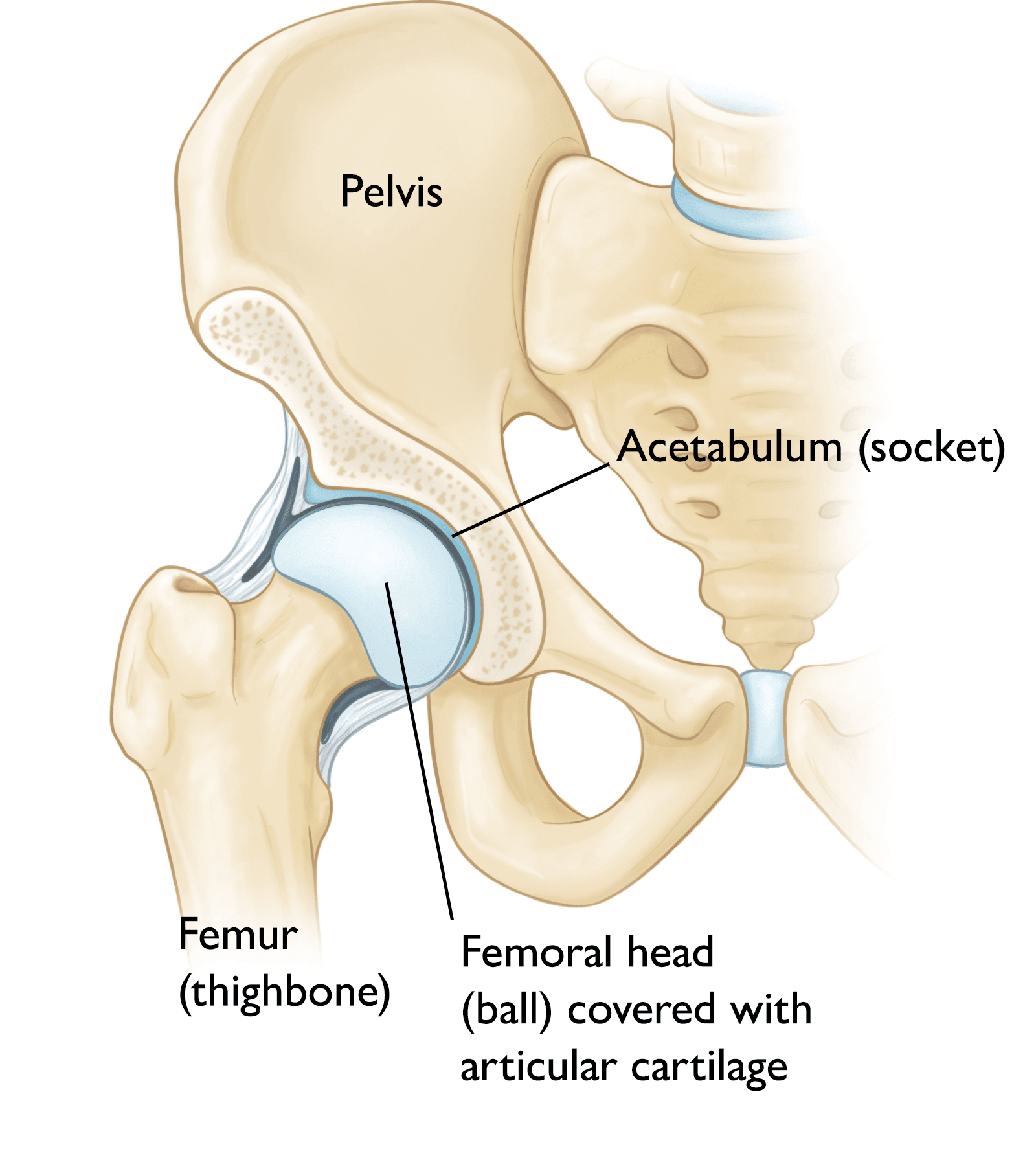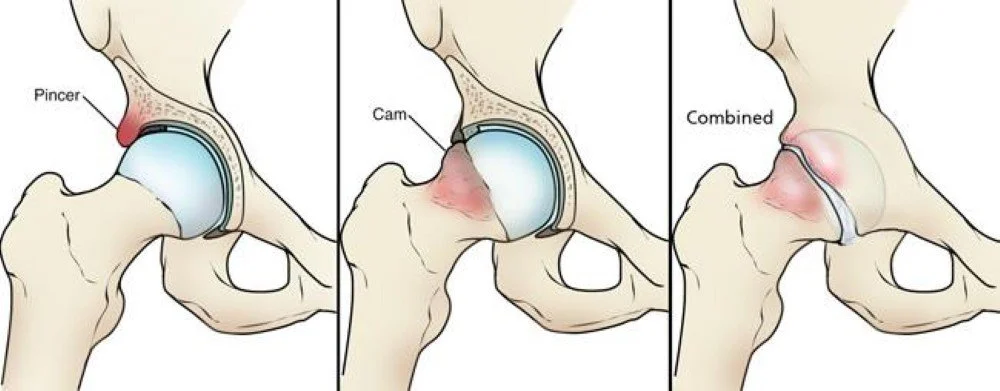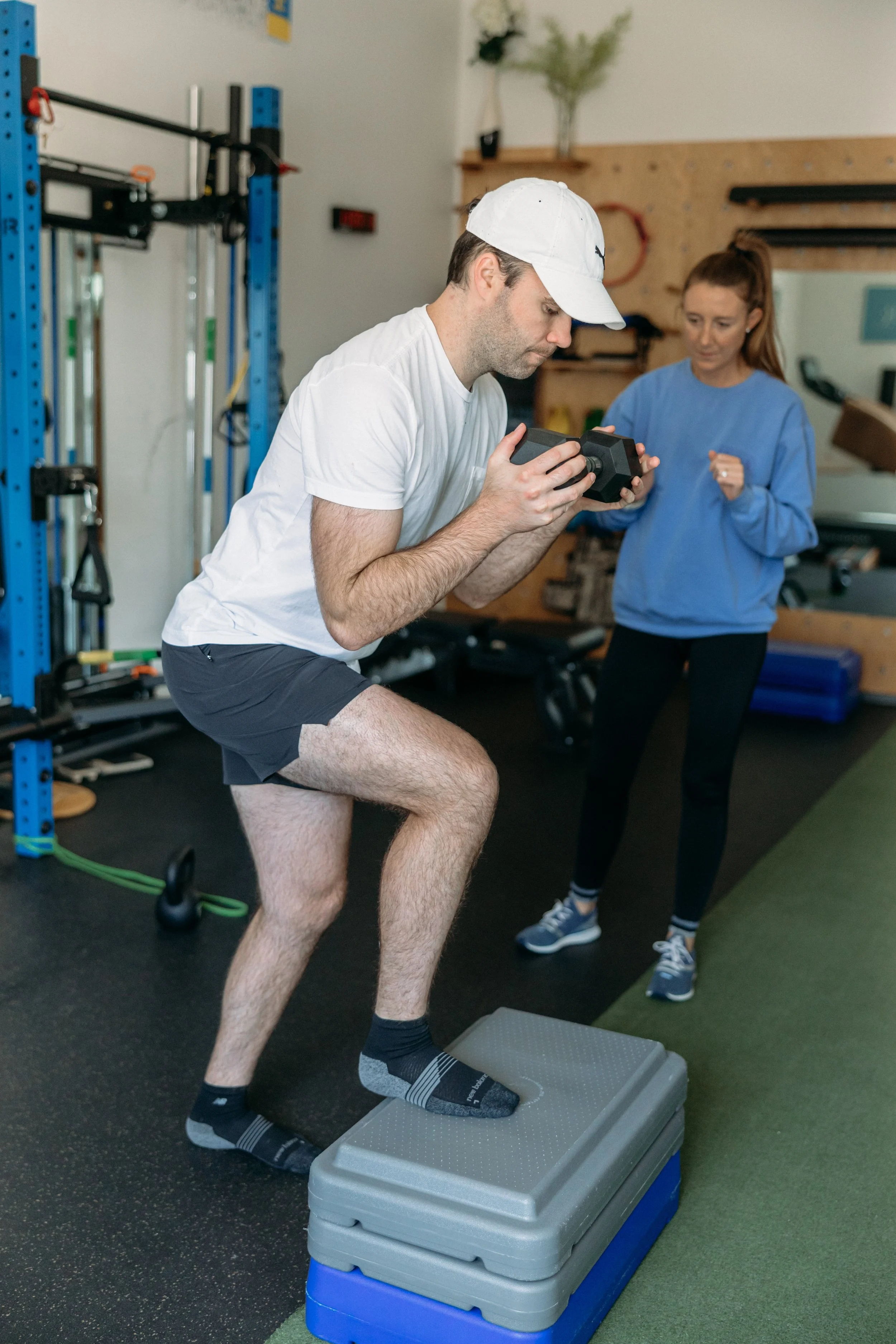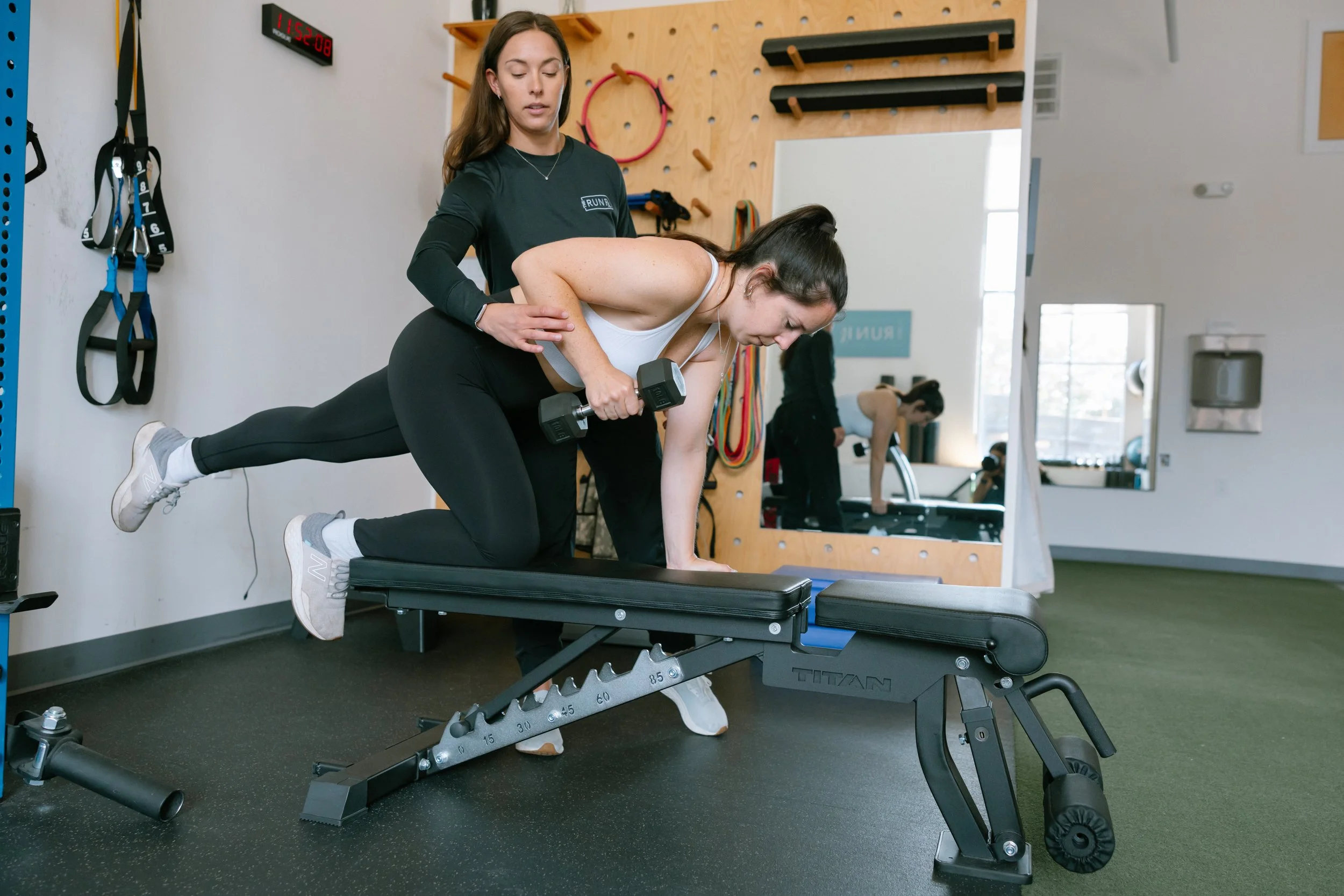Running Injury Spotlight: Hip Impingement and Labral Tears
Understanding Hip Impingement and Labrum Tears in Runners
If you’re a runner dealing with nagging hip or groin pain — especially during squats, hills, or long runs — it might be more than “tight hips.” You could be experiencing Femoroacetabular Impingement (FAI) or a labral tear. Both are common among active people and can often be treated successfully without surgery when caught early.
🩻 What Is the Hip Joint — and What Is FAI?
The hip is a ball-and-socket joint, made up of the femoral head (ball) and the acetabulum (socket) of the pelvis. Between them lies the labrum, a ring of cartilage that adds cushioning and stability.
Femoroacetabular Impingement (FAI) happens when the ball and socket don’t fit together smoothly, creating excess friction or pinching during movement. Over time, this can irritate the labrum and surrounding structures, leading to pain, stiffness, or limited mobility.
⚙️ Types of FAI
Cam Impingement – An irregularly shaped femoral head bumps against the socket during motion.
Pincer Impingement – The hip socket covers too much of the ball, creating overlap and friction.
Combined Impingement – Features of both types; common in active adults and athletes.
🧬 What Causes FAI?
FAI can be genetic or activity-related. Some people are born with the bone shape that leads to impingement, while others develop it through repetitive, high-impact activity.
Common contributing factors:
Childhood hip conditions like Slipped Capital Femoral Epiphysis or Legg-Calvé-Perthes disease
Malunion after hip fractures
Repeated hip flexion and rotation (common in running, hockey, basketball, and soccer)
Structural differences between men and women — Cam-type more common in men, Pincer-type in women
🚨 Common Symptoms in Runners with Hip Pain
FAI Symptoms
Deep hip or groin pain
Stiffness or reduced motion
Clicking or locking sensation
Pain with squatting, stairs, or prolonged sitting
Occasionally asymptomatic — changes may appear on imaging without pain
Labral Tear Symptoms
Sharp anterior hip or groin pain (sometimes radiating to the knee)
Catching or “giving way” sensation
Pain with walking, pivoting, or running
Loss of hip flexion and internal rotation
⚠️ Risk Factors
Repetitive hip rotation or flexion sports
Elevated BMI
Structural abnormalities of the hip
Prior injury or childhood hip conditions
Both FAI and labral tears can increase the long-term risk of hip osteoarthritis
💡 Treatment Options
The encouraging news: many runners with FAI or labral tears can stay active — and even pain-free — without surgery.
At The Run Rx in Somerville, MA, our team of physical therapists and performance specialists helps runners restore strength, mobility, and control to reduce irritation and prevent further labral damage.
Our approach includes:
1. Improving Range of Motion
Addressing range of motion restrictions in the joint will help your body move as comfortably and freely as possible
2. Strengthening the Core and Hip Girdle
Having strong hip girdle and trunk muscles will help to better support the joint to reduce the stress going through the hip. [Read our blog on the all important glute medius!]
3. Enhancing Hip Stability and Control
Instability is a common finding with FAI and labral tears. Not only is having strong muscles important, but working on the control of our movements at the hip and pelvis is also very important as it can help to reduce shearing and friction forces on the joint and minimize symptoms. [Read our blog on the Hardware vs Software of Running]
4. Plyometric Strength
The hip labrum is a weightbearing structure so if we can improve the runners ability to absorb impacts with running, we can reduce the cumulative loading on the tissue in runners. [Read our blog on Power and Plyometrics for Runners]
🩺 Why Surgery Isn’t Always the Best Option
While surgery for hip impingement or labral tears in runners can help in some cases, results are often mixed, especially when joint wear or cartilage changes are present. Studies show many people still experience ongoing symptoms or need further procedures later on — making conservative care the best place to start.
Recent research has shown that while most people report short-term improvement after hip arthroscopy, outcomes are often inconsistent, and recovery can be lengthy — particularly for athletes returning to high-impact sports like running. In one mid-term follow-up study, patients demonstrated improvement but persistent functional deficits remained common (Gahleitner et al., 2025, Journal of Clinical Medicine).
For many runners, this means that optimizing strength, mobility, and movement control through conservative care is often just as effective — and far less disruptive — than surgical intervention.
🏃♀️ How The Run Rx Can Help You Avoid Surgery
At The Run Rx, we help runners improve hip mobility, strength, and impact control to offload the labrum and reduce joint stress. Our 1-on-1, runner-focused physical therapy and advanced gait analysis identify the true source of your hip pain and address it with precision — not guesswork.
You can expect:
A clear understanding of why your hip hurts and how to fix it
Strength and control that restore efficient, pain-free movement
Strategies to stay strong, mobile, and injury-resilient for the long run
Whether you’re training for the Boston Marathon or just want to move comfortably again, our goal is simple: help you move better, avoid surgery, and keep running for life.
book a free discovery call with our team today.







